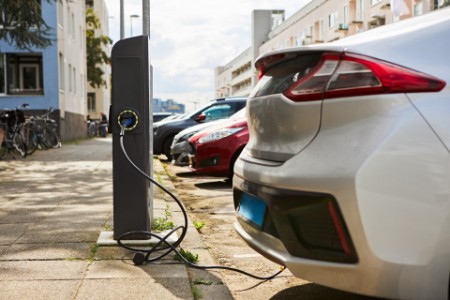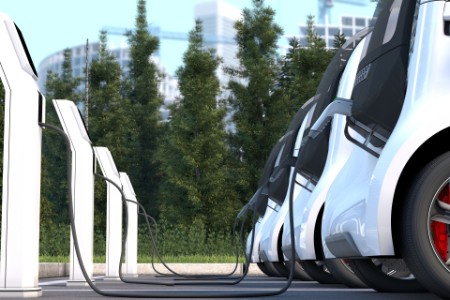
Chapter 1
Mobility shift ahead
Hybrid and remote working have changed travel patterns.
Both work- and nonwork-related travel in Australia remain below pre-COVID-19 levels, down 7% and 4%, respectively, from 2021 expectations. Monthly work journeys by the two most popular modes — car and public transport— are down 7% and 35%, respectively. This pattern looks set to remain at least in the medium term. Although offices have reopened, the new norms of flexible and remote working are impacting work travel. Half of those surveyed work from home at least two days a week, almost double the pre-COVID-19 level. And 33% do so at least three or four times a week, up from 16% pre-COVID-19.
Our increasingly digital lifestyles may have been imposed upon us by the pandemic but are now active choices for many consumers, and a persistent factor in reducing non-work travel. Despite lifts in official travel restrictions in many countries, consumers in 2022 are still choosing to travel less than they did before the pandemic.
Hygiene factor here to stay
While reliability and convenience remain Australian consumers’ top priority when choosing how to travel, a new focus on hygiene and avoiding infection is increasingly front of mind. Sixty-five percent of people surveyed say it is very or extremely important. After more than two years of encouraging people to stay at home and stay safe, governments and transport authorities may have inadvertently created a new and potentially limiting narrative around transport safety.
With sustainable transport a key plank in climate change initiatives, this aversion to mass transit is emerging as a major challenge for city transport authorities. A carrot and stick approach may yield results, with 41% of Australian consumers saying that free public transport would reduce their usage of private cars, and 30% saying that urban traffic charges would also encourage them to take fewer journeys by car.
Shared mobility shake-up
Shared mobility (ride sharing, care sharing and car rental) — one of the pre-pandemic success stories when it comes to more sustainable urban travel in particular — has largely gone into reverse. Globally it has declined 4% on pre-COVID-19 levels, but in Australia, shared mobility is down a hefty 9%. Availability may also continue to suffer, with the Australian Rideshare Drivers Association warning that many drivers may get out of the sector as the cost of fuel continues to eat into their earnings.
Some shared mobility providers have responded to falling demand by diversifying into last mile deliveries, a sector that flourished during the pandemic. Recent EY research (Update on Global Transport and Mobility Trends, March 2022) estimates that last mile demand will result in 36% more delivery vehicles on the streets of the top 100 global cities by 2030.

Chapter 2
Buying boom beckons
Buying boom beckons
The second year of the pandemic has seen a continued rise in consumers’ desire to own their own vehicle. Seventy-two percent of Australians surveyed in 2022 said that constant access to a personal car is very important to them (up from 67% last year) and 67% believe their safety or well-being is best served by a personal vehicle (up from 58%). Only 10% say they would be open to car rental or subscription services as an alternative to buying.
These sentiments are driving demand for new and used cars, even in a market where supply chain disruption has severely limited availability and weakened consumers’ bargaining power. Forty-two percent of Australian consumers say they intend to buy a car within the next 24 months, (the same as 2020), with more than half (59%) planning to purchase in the next 12 months. Twenty-nine percent of those will choose a new car, while 13% intend to buy used.
Electric cars are the stars
Consumer confidence in EVs is rising fast, with more than half of global consumers that intend to buy a car in the next 24 months saying they will choose an EV or hybrid vehicle. Australian figures remain well below the global average at 38%, but the figure is still a big jump from 17% in 2021. Growing confidence of Australian consumers in EV technology is reflected by the rise in preference for fully electric vehicles, up from 6% in 2021 to 13% in 2022. We see similar increases in the popularity of “stopgap” hybrid and plug-in hybrids.
As the preference for EVs grows, the motivations for choosing one are shifting; green “early adopters” whose main drivers are environmental are now being joined by mainstream buyers with more prosaic financial concerns. The “pull” effect — the desire to be seen helping the environment by buying an EV — is now closely followed by the “push” of fears that congestion, pollution charging, and high fuel costs may hit the owners of ICE vehicles harder. Environmental concerns are also a lower priority for second-time EV buyers than for those considering their first EV purchase.
Charging infrastructure remains a barrier to EV ownership in Australia. Access to, and speed of, charging is emerging as the key inhibitor for would-be buyers, as concerns over high initial costs seem to be reducing.

Chapter 3
Can the industry keep up?
Supply chains have been hit by delays, shortages, and economic and logistical disruption.
Since the start of the pandemic, the mobility sector has faced two overarching questions: Is this a blip? And if it isn’t, which of the changes in travel behavior will be temporary and which will be permanent?
While uncertainty is ongoing, some factors indicate that certain mobility changes may be embedded in Australian life for the longer-term. Hybrid and home working appear engrained, so commuting seems likely to become less of a daily activity. Meanwhile digital lifestyles have become established, reducing non-work journeys such as those to the shops and to entertainment venues. When people do travel, their preference is to do so via their own car, with EVs emerging as the new car choice for more buyers.
But if the demand picture solidifies, supply is another matter. Global auto supply chains have already been hit by delays and shortages, especially in the semiconductor market. Now the geopolitical fallout of the war in Ukraine and subsequent economic and logistical disruption will exacerbate these problems. The hardest challenges for OEMs and dealers in the coming months may be around supplying enough cars to meet the rising demand.
EV sales are likely to continue to grow, with the EY Mobility Lens Forecaster predicting that, globally, they will dominate vehicle sales by 2033 — five years sooner than previously anticipated. But EVs will face many of the same supply constraints that plague the ICE market, as well as some that are all their own, particularly around battery raw materials. Trading off the tension between the supply and profitability of old ICE technologies vs. new EV and hybrids will remain a serious challenge as the transition accelerates.
So, while the pandemic has crystalised consumer behavior around a preference for EVs combined with more conscious travel choices — and lower levels of mobility — for the auto industry, it has created a whole new dilemma around supply. Hard choices about whether to prioritise EV and hybrid drivetrains, or premium models over more affordable — but lower margin — vehicles may have to be made. Manufacturers are already carefully considering which markets make the most economical sense to distribute their restricted stock.
Summary
Making progress in 2022 may not only be about asking the consumer “What kind of cars do you want to buy?”, but also about the industry asking itself “And what should we do if we can’t make enough of them?”


